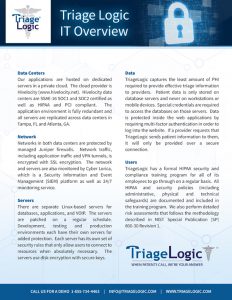How Triage Nurses Are Making a Difference
There are many times when the triage nurse is able to redirect the caller to a less expensive treatment option that allows them to stay home and treat their symptoms while also educating them on the symptoms that they should be aware of that require a trip to the Emergency Room. Many times, patients who have had little or no history of serious illness need the guidance of a triage nurse to help them determine which symptoms are indicative of the need for emergency treatment.
Meet James, he is a 19-year-old Freshman at the local university. He is staying on campus and this is his first time being away from home. It is 9 pm on Sunday night and the student health department is closed until the next morning. James has developed a sore throat and a fever of 101. He is able to drink and eat normally but it notes that it was slightly painful. James tells the nurse that his throat was scratchy feeling yesterday but he was able to attend the university football game last night. He woke up with a sore throat and fever this morning. James has never been seen in an Emergency Room but wonders if he should go seek treatment right away. He finds a card with the nurse triage number on it which reads “Call this number before going to the Emergency Room”. As he is getting dressed to head to the Emergency Room, he calls the triage nurse.
In a short 10 to 12-minute conversation, the triage nurse must gather enough information about the patient’s current symptoms, pertinent past medical history and any other significant circumstances. The nurse needs to assess whether or not the patient is able and willing to comply with the recommended plan. The nurse is able to rule out any emergent or urgent symptoms by asking James questions about his current symptoms, when they started, how bad the pain was, any recent exposures to Mono or Strep Throat. Having determined that he had not been exposed and was not having any difficulty breathing or swallowing, the nurse is comfortable reassuring James that he can handle these symptoms without going to an Emergency Room. She gives him home care advice and warning signs of symptoms that would require a trip to the emergency room that evening.
While not all patients that call nurse triage can safely care for their symptoms at home, there are many that can. The nurse plays an intricate part by asking the right questions to gather information about her patient to make an educated recommendation. James was confident when armed with home-care instructions, that he would be able to comfortably stay home and avoid a long night in the Emergency Department.

How secure is your patient data?
Find out the steps TriageLogic takes to protect patient data and ensure that our products are properly secure.






